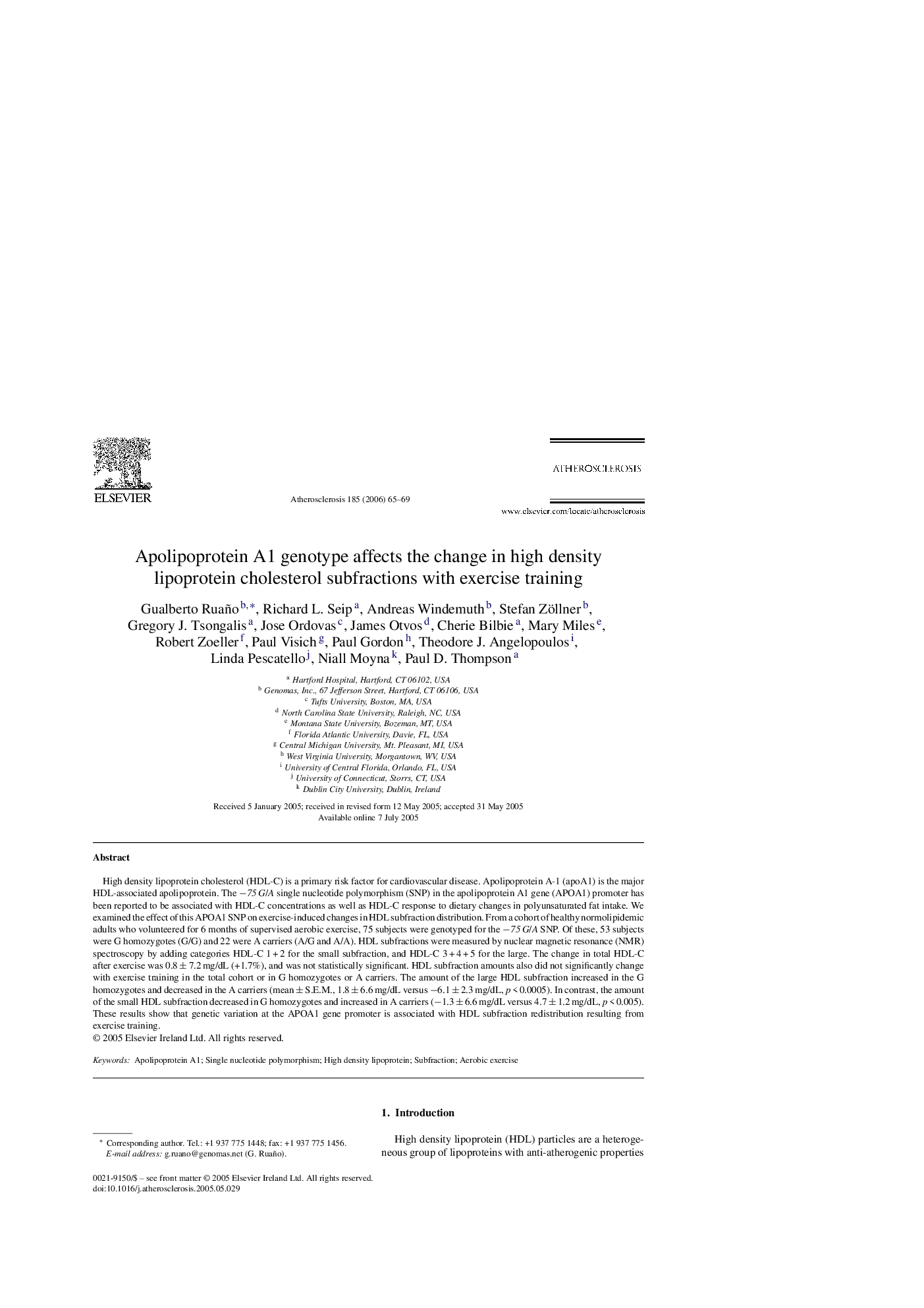| Article ID | Journal | Published Year | Pages | File Type |
|---|---|---|---|---|
| 2895401 | Atherosclerosis | 2006 | 5 Pages |
High density lipoprotein cholesterol (HDL-C) is a primary risk factor for cardiovascular disease. Apolipoprotein A-1 (apoA1) is the major HDL-associated apolipoprotein. The −75 G/A single nucleotide polymorphism (SNP) in the apolipoprotein A1 gene (APOA1) promoter has been reported to be associated with HDL-C concentrations as well as HDL-C response to dietary changes in polyunsaturated fat intake. We examined the effect of this APOA1 SNP on exercise-induced changes in HDL subfraction distribution. From a cohort of healthy normolipidemic adults who volunteered for 6 months of supervised aerobic exercise, 75 subjects were genotyped for the −75 G/A SNP. Of these, 53 subjects were G homozygotes (G/G) and 22 were A carriers (A/G and A/A). HDL subfractions were measured by nuclear magnetic resonance (NMR) spectroscopy by adding categories HDL-C 1 + 2 for the small subfraction, and HDL-C 3 + 4 + 5 for the large. The change in total HDL-C after exercise was 0.8 ± 7.2 mg/dL (+1.7%), and was not statistically significant. HDL subfraction amounts also did not significantly change with exercise training in the total cohort or in G homozygotes or A carriers. The amount of the large HDL subfraction increased in the G homozygotes and decreased in the A carriers (mean ± S.E.M., 1.8 ± 6.6 mg/dL versus −6.1 ± 2.3 mg/dL, p < 0.0005). In contrast, the amount of the small HDL subfraction decreased in G homozygotes and increased in A carriers (−1.3 ± 6.6 mg/dL versus 4.7 ± 1.2 mg/dL, p < 0.005). These results show that genetic variation at the APOA1 gene promoter is associated with HDL subfraction redistribution resulting from exercise training.
